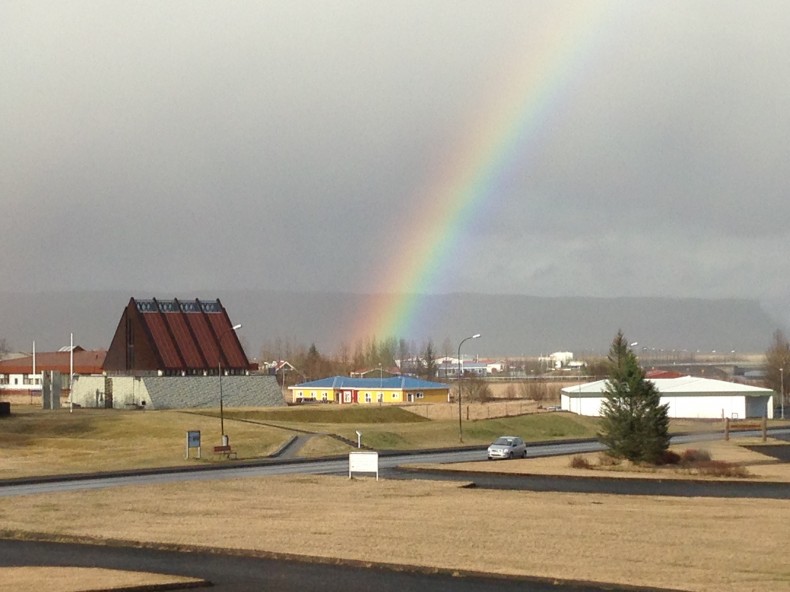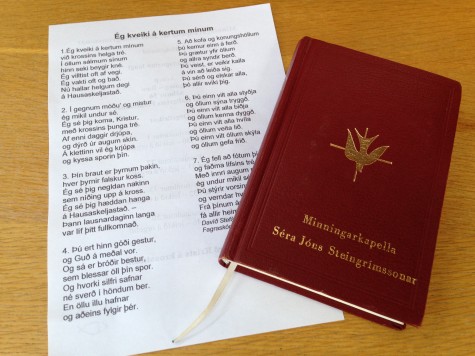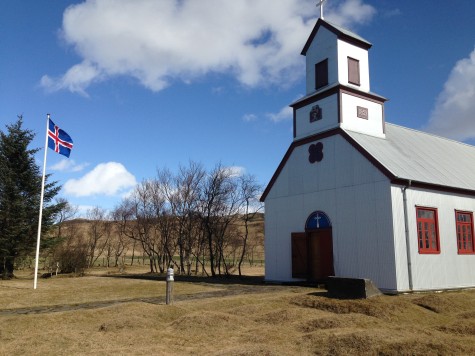
People say that writing a book is something of an obsession. It has to be. Why else would you turn over your life for several years to, say, the sex life of bedbugs or the dark energy driving the universe?
In our case, it was 18th-century Iceland that did us in — more specifically, a pastor in a remote village in 18th-century Iceland. Our book Island on Fire details a horrific volcanic eruption that took place in 1783. It started on June 8, almost exactly 231 years ago, practically in the back yard of a farmer, doctor and pastor named Jón Steingrímsson. He wrote down everything he observed, documenting the eruption day after day, in what has become an important chronicle in the annals of volcanology. The eruption lasted eight months; the famine from its toxic ashfall lasted nearly two years. Pastor Jón wrote of earth and fire and flames, and of how the volcano named Laki destroyed nearly everything he loved.
When you first start researching a book, you go out and gather material that you think will be useful. We visited Pastor Jón’s village, a place called Klaustur, in the summer of 2012. Next, of course, you have to actually write the book. We spent the following year thinking, obsessing, and dreaming about Laki, Jón, and Klaustur.

By the time the book was done, we felt as though we’d been living in Iceland’s past. We had mentally sat through, time and again, Pastor Jón’s famous ‘fire mass’ of July 1783, in which he entreated God to stop the volcanic lava that was about to engulf his village. (Spoiler alert: The lava flow stopped just short of town, and Jón looked as if he had a direct line to the almighty.)
This April, it was time to return to Europe for a publicity tour to promote the book. We couldn’t do it without passing through the region we had visited only once and yet dreamed about for so long. We decided to return to Klaustur, in what became an unusual and almost dreamlike journey. It’s not just that the region is beautiful in an alien sense, with its steep cliffs, waterfalls, and vast landscapes of lumpy moss-covered lava forms. What made it uncanny was that we felt we were visiting from Klaustur’s past, a past that still lingers there like a ghost drifting among the few modern structures, homes, and streets.
It was fitting, then, that we visited with another Jón in the village. Jón Helgason is pretty much the elder statesman of Klaustur; he owns a prosperous farm, served in the Icelandic parliament and even as agricultural and justice minister. Now in his eighties, he might be considered the caretaker of Pastor Jón’s legacy. He knows the whole story from start to finish, and relishes nothing more than sharing it with visitors (even if they can’t speak Icelandic).
On Easter Sunday, we met up with Helgason in the little church at a place called Prestbakki. He seemed genuinely delighted, and a little surprised, when we put the book in his hands, as if he thought it would never come to pass (we thought so too, at times). We gushed about how at home we felt in Klaustur, having lived it in our minds for so long, and Helgason smiled and nodded back, as if he knew something we didn’t.

Then services began. It was here we experienced a sense of standing in two separate time periods. The bell that was rung to call the worshipers is the same bell that Pastor Jón had rung countless times in the belfry of his church in Klaustur (it was moved to this new location in 1859). The hymns were the same ones he would have led, in the ancient-sounding Icelandic language. The pastor leading the services wore an old-fashioned high-necked collar and robe. And Prestbakki itself was the farm where Pastor Jón used to live. It gave us more than a little temporal vertigo.
That night, making our visit even more surreal, we viewed a grand display of the aurora borealis on a dark road not far from the Prestbakki church. The spectral lights enveloped the Big Dipper, practically overhead, and shimmered down to the horizon in great green columns and curtains.
We were dumbstruck with their beauty, and with the place we’ve come to love in both the past and present.
Alexandra Witze and Jeff Kanipe live in Boulder, Colorado; Pegasus will publish a US edition of their Laki book this winter. If you visit Klaustur, which everybody should, they recommend the Icelandair Hotel Klaustur. Tell the manager Sveinn they sent you.
All images by Witze and Kanipe.